Abstract
Generalization across three stimulus parameters was examined for 5 individuals whose self-injurious behavior was maintained by escape from task demands. Prior to treatment, three stimulus parameters (therapist, setting, and demands) were systematically varied across baseline sessions. These variables were held constant during treatment, which consisted of escape extinction. When treatment was completed, three novel stimulus parameters were probed. If the rate of self-injury was high during this probe, treatment was reimplemented with one new stimulus parameter (the other two were the same as in the original treatment condition). Following this second treatment, another probe with three novel stimuli was conducted. If the rate of self-injury was again high, treatment was implemented again while a second stimulus parameter was changed. This sequence continued until generalization was observed across the three parameters. Results showed idiosyncratic differences in generalization. The behavior of 2 subjects showed complete generalization during the first novel probe. A 3rd subject's behavior showed generalization following treatment across two stimulus parameters (setting and therapist). The behavior of the 2 remaining subjects showed a complete lack of generalization across the three parameters; both subjects required training for novelty by randomly varying the stimulus parameters for a substantial number of sessions.
Full text
PDF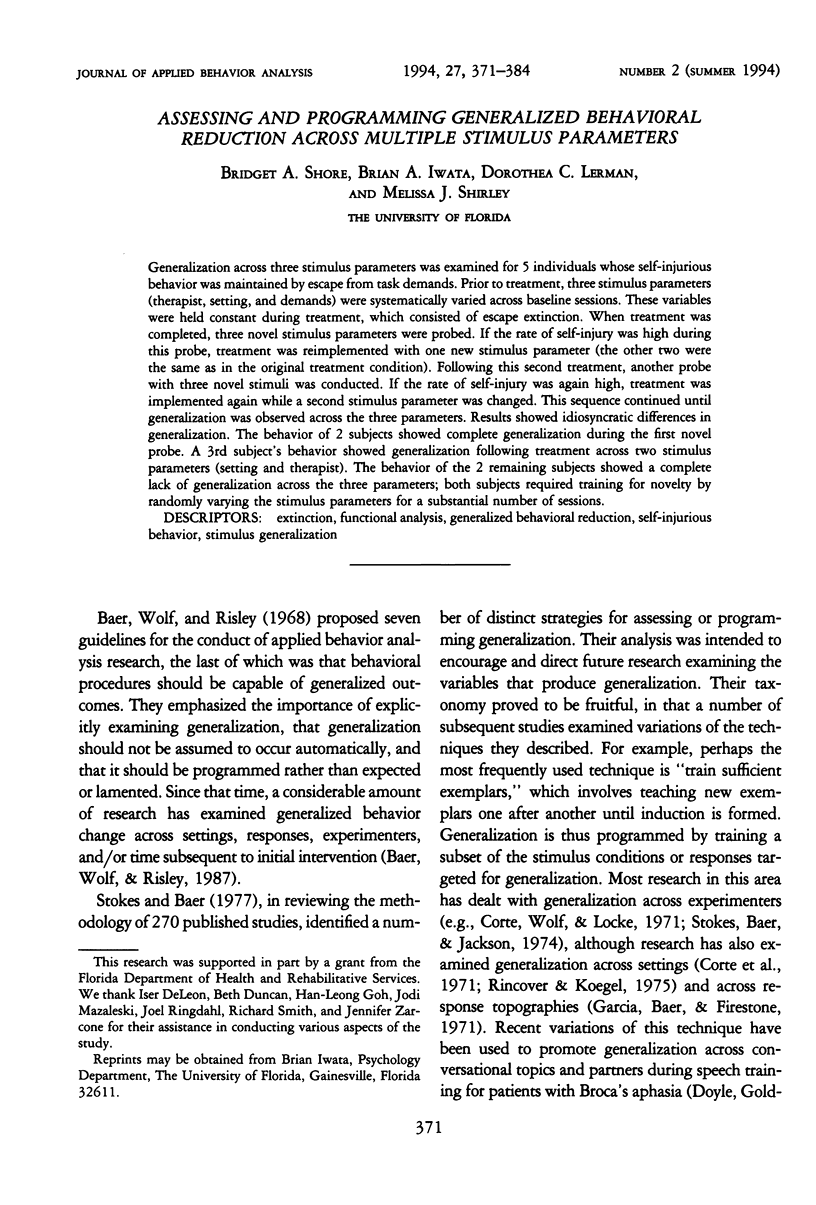
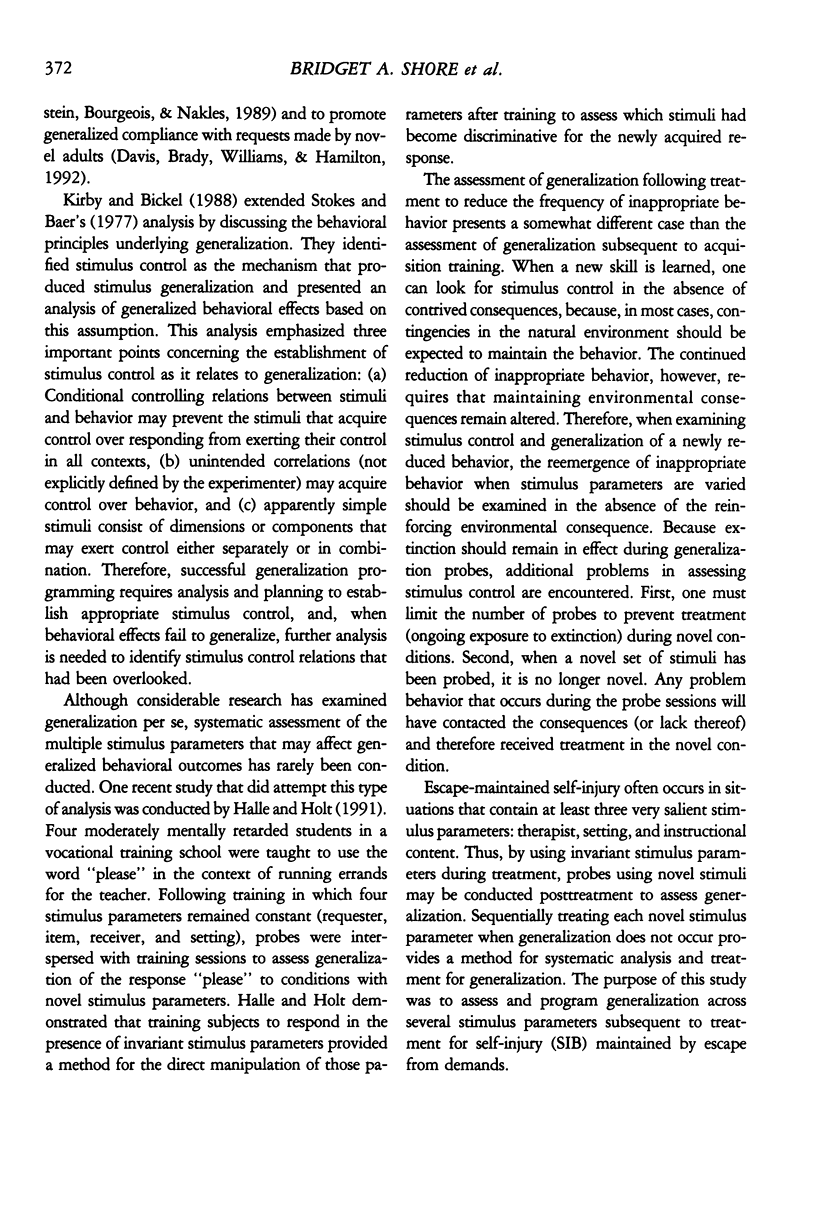
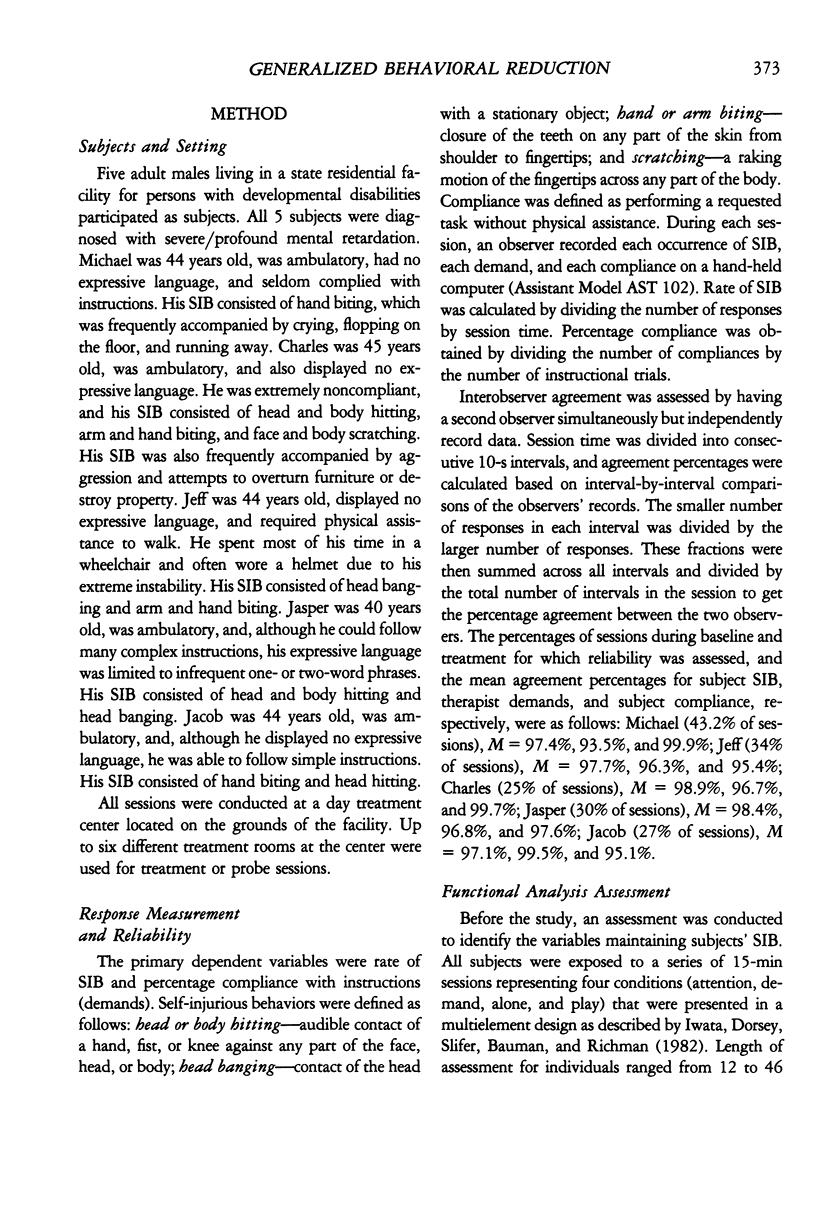
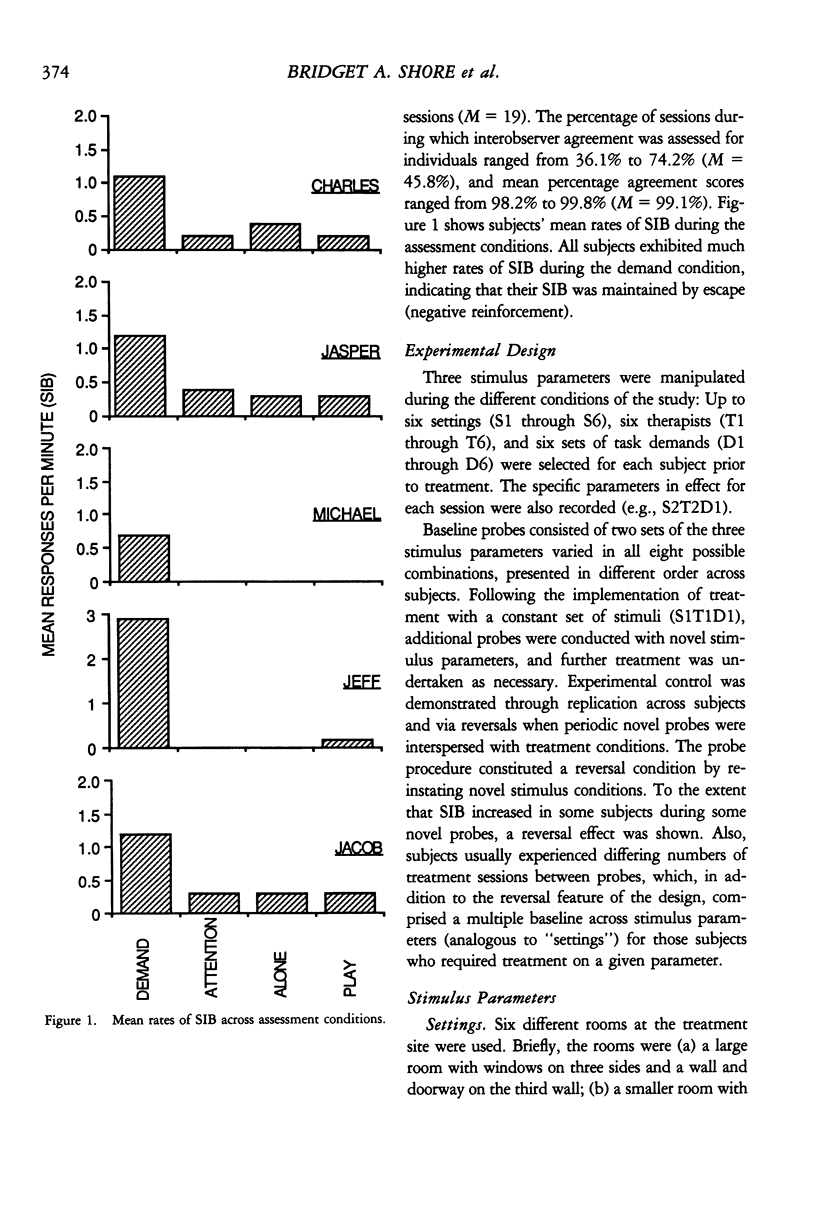
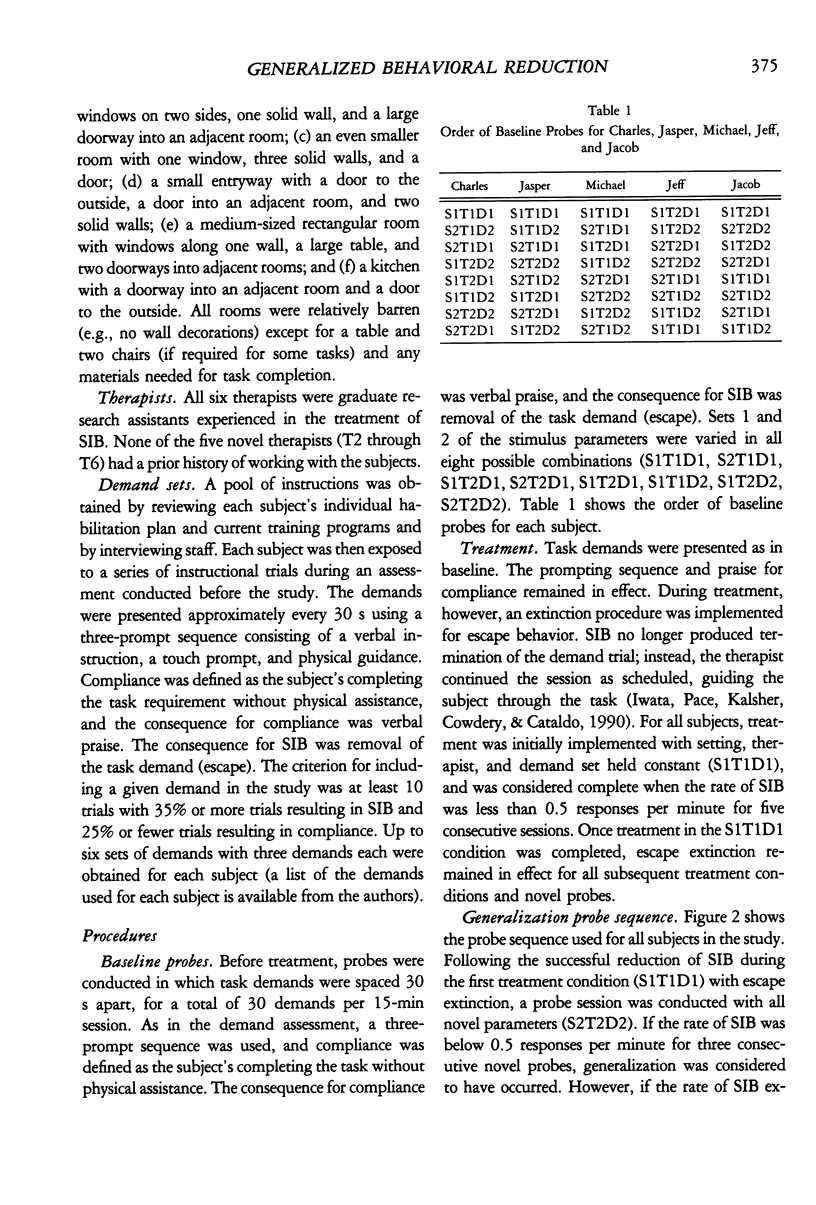
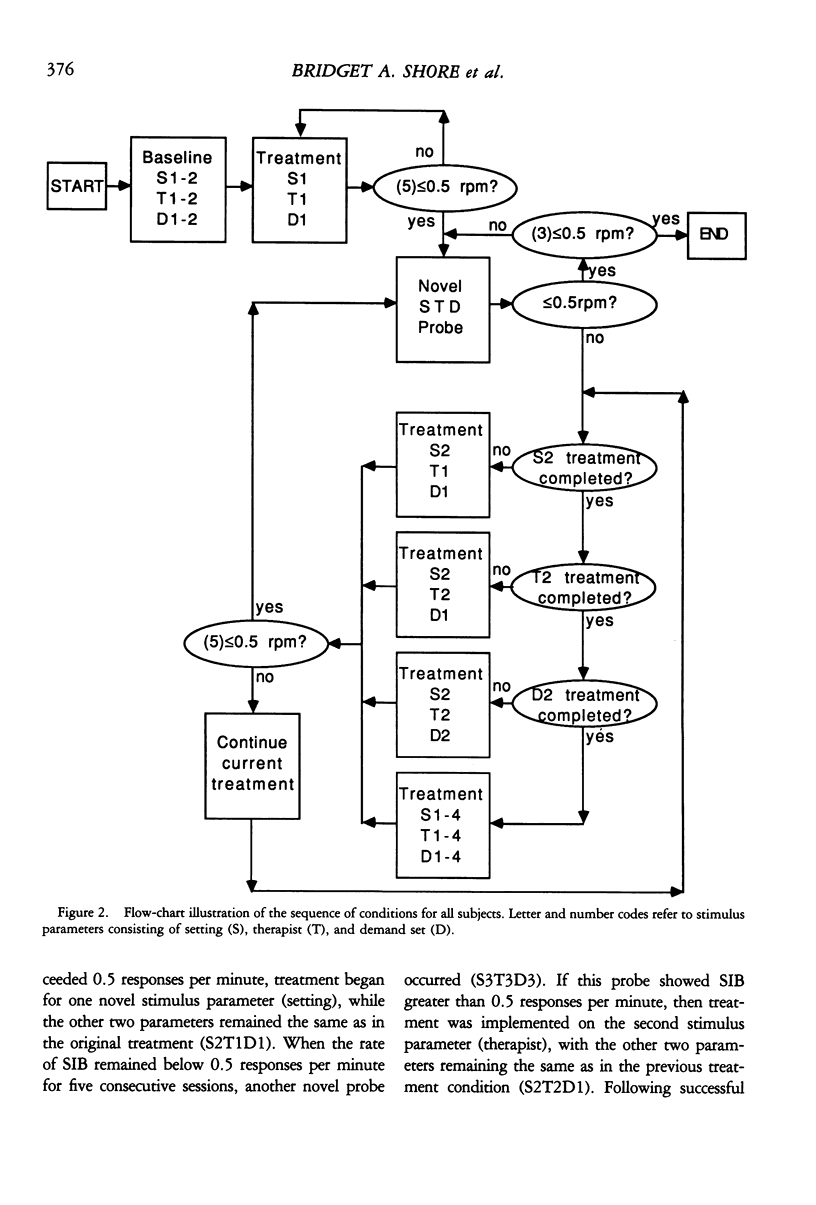

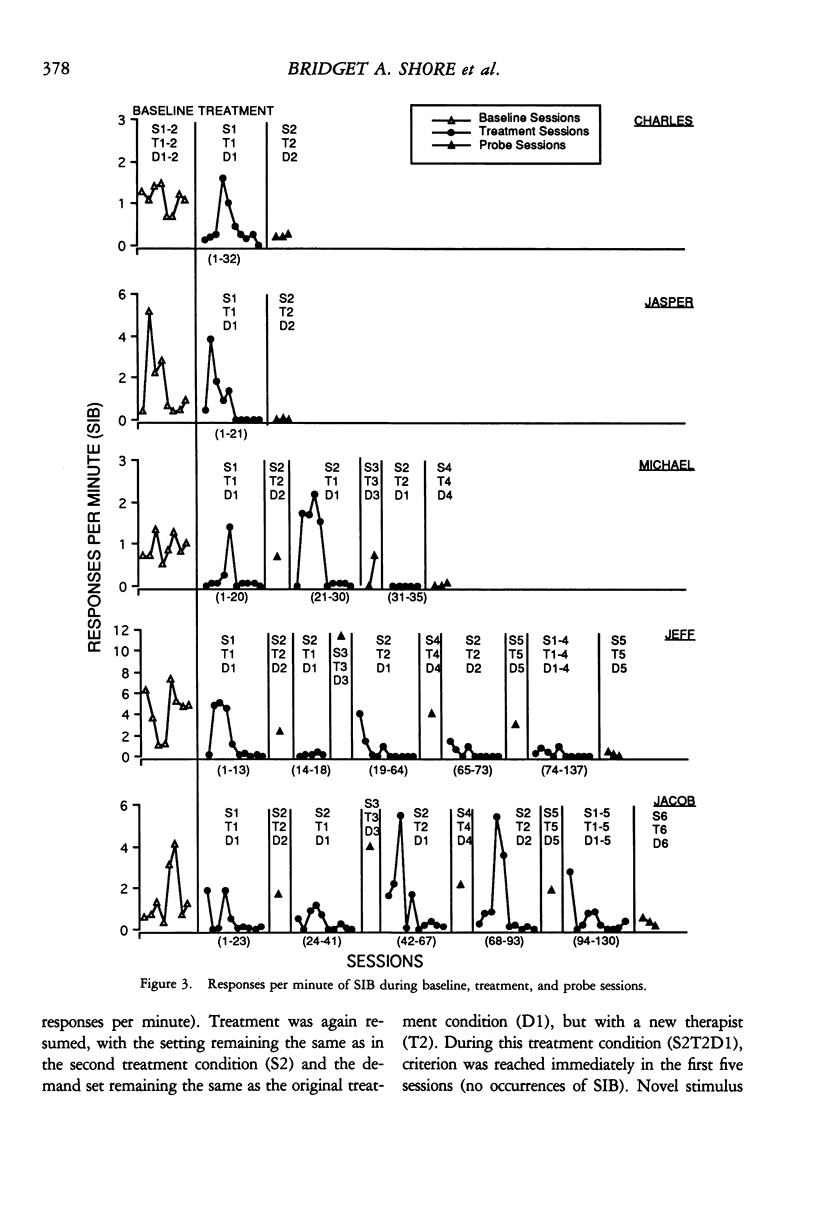
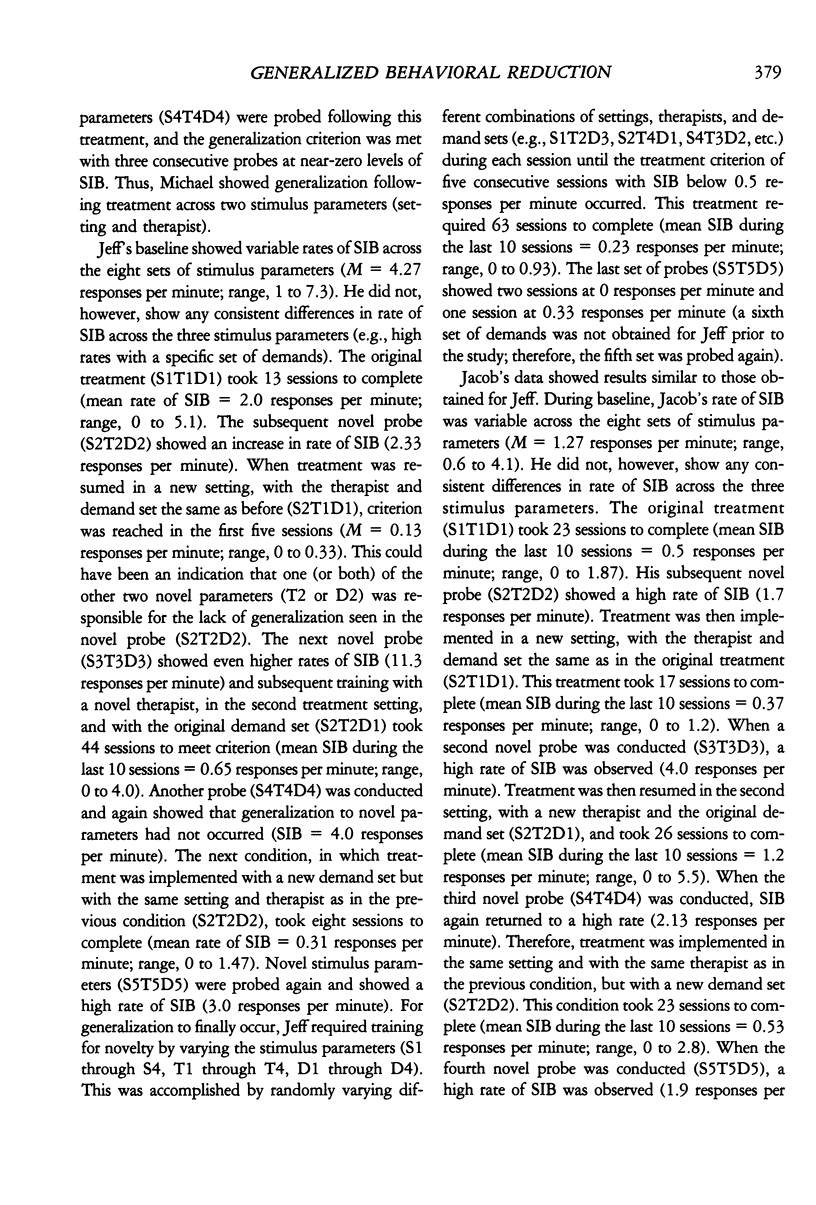
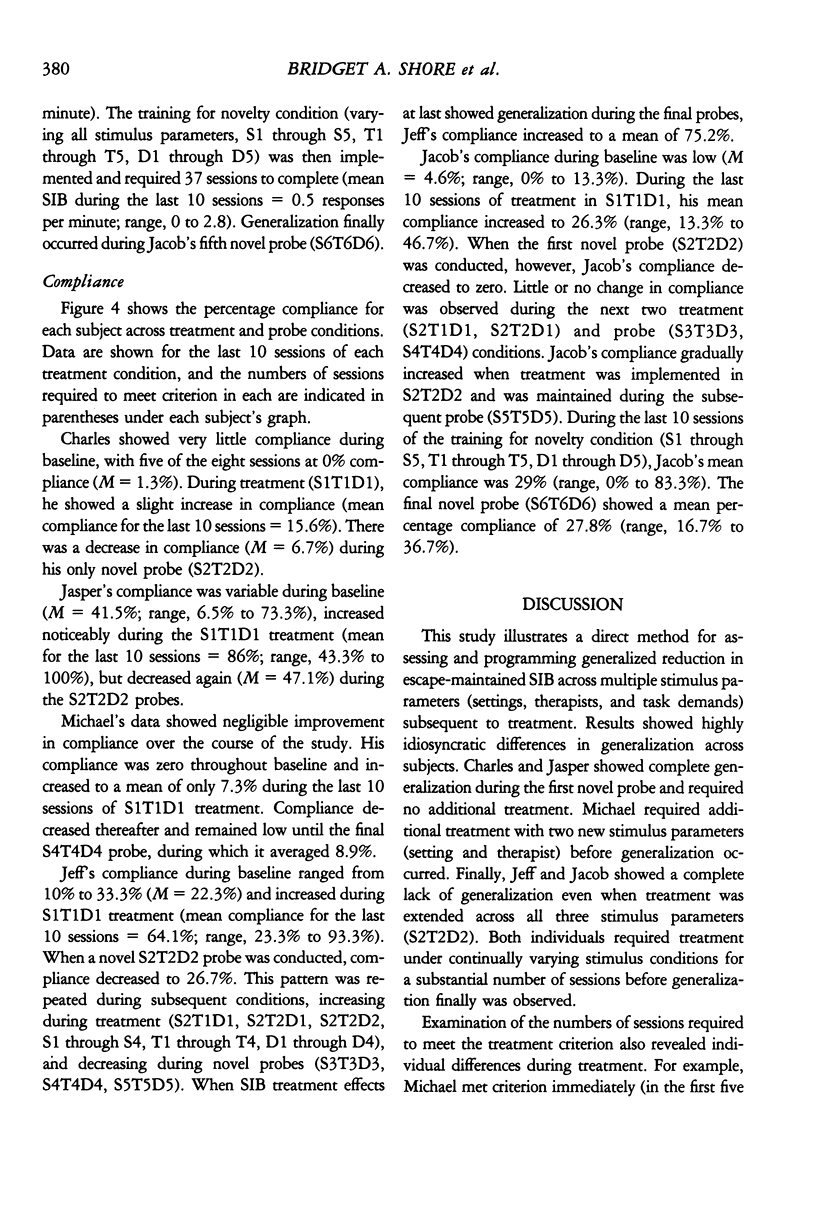
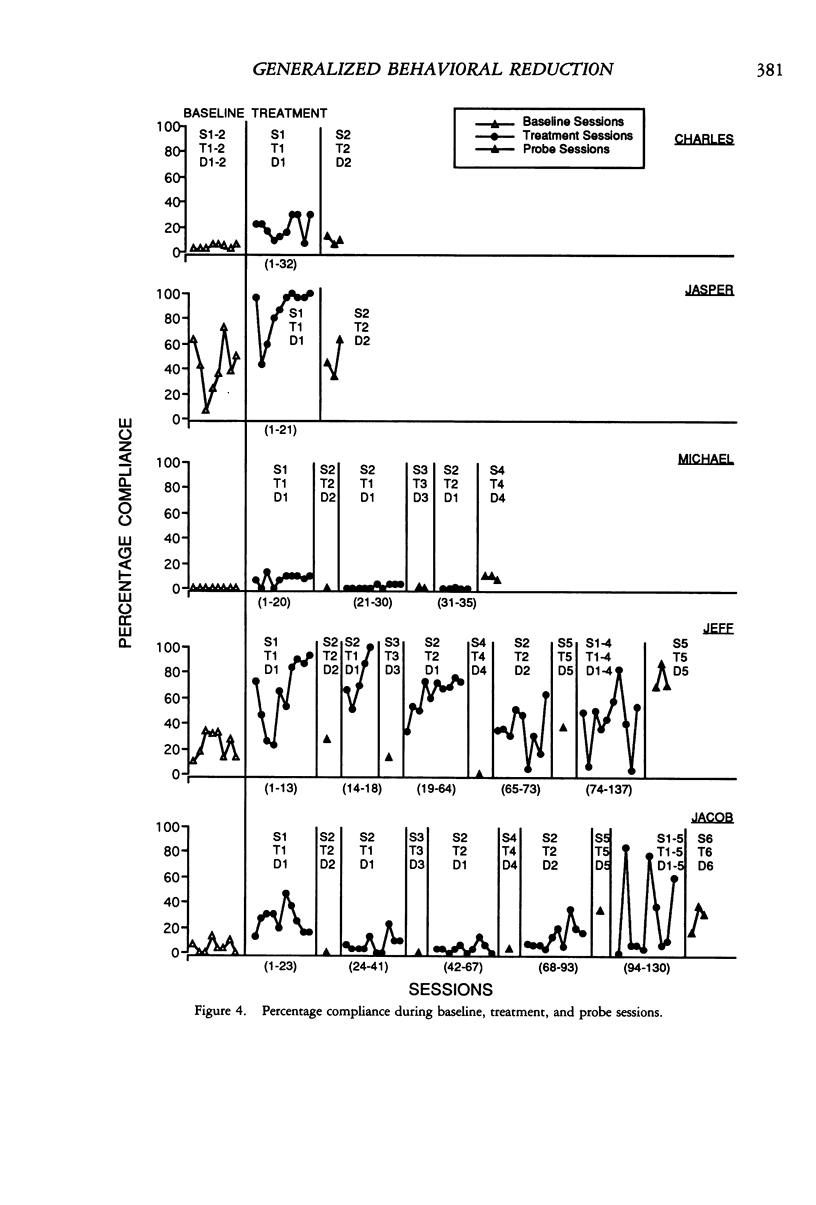

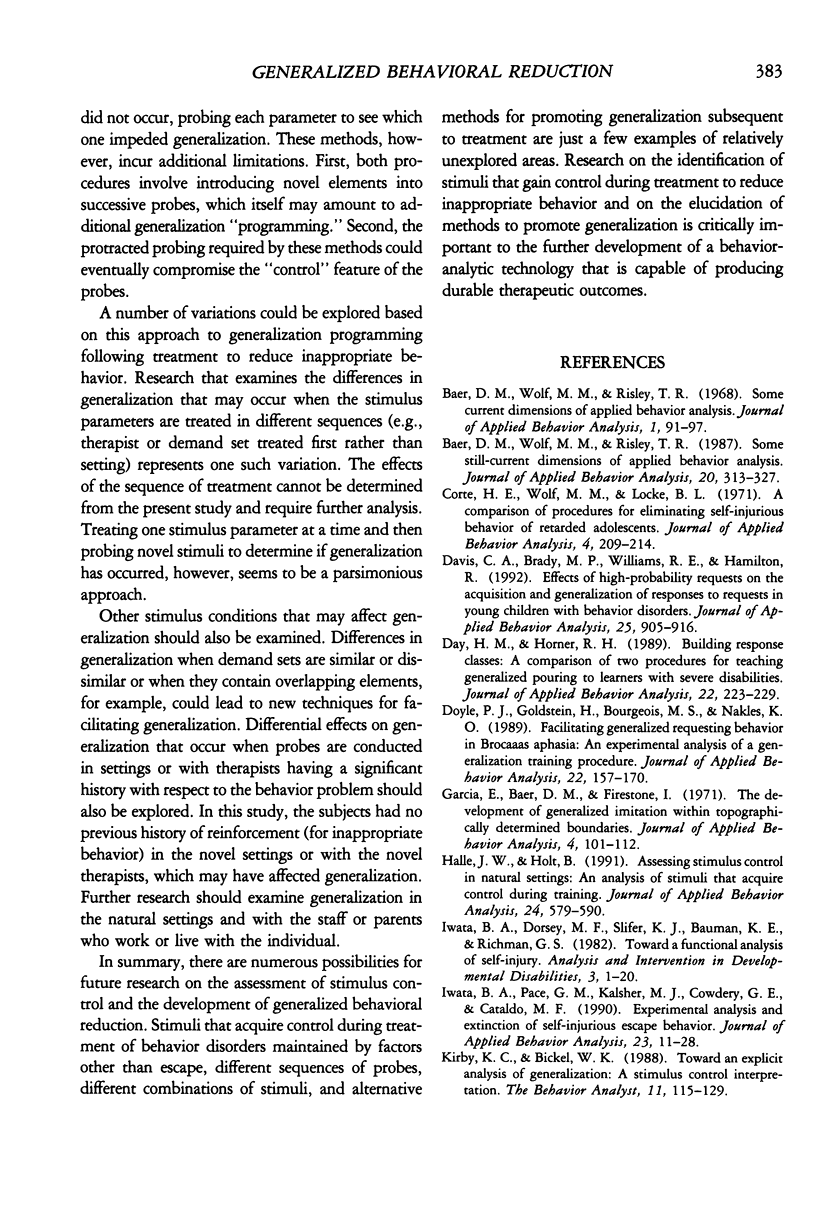
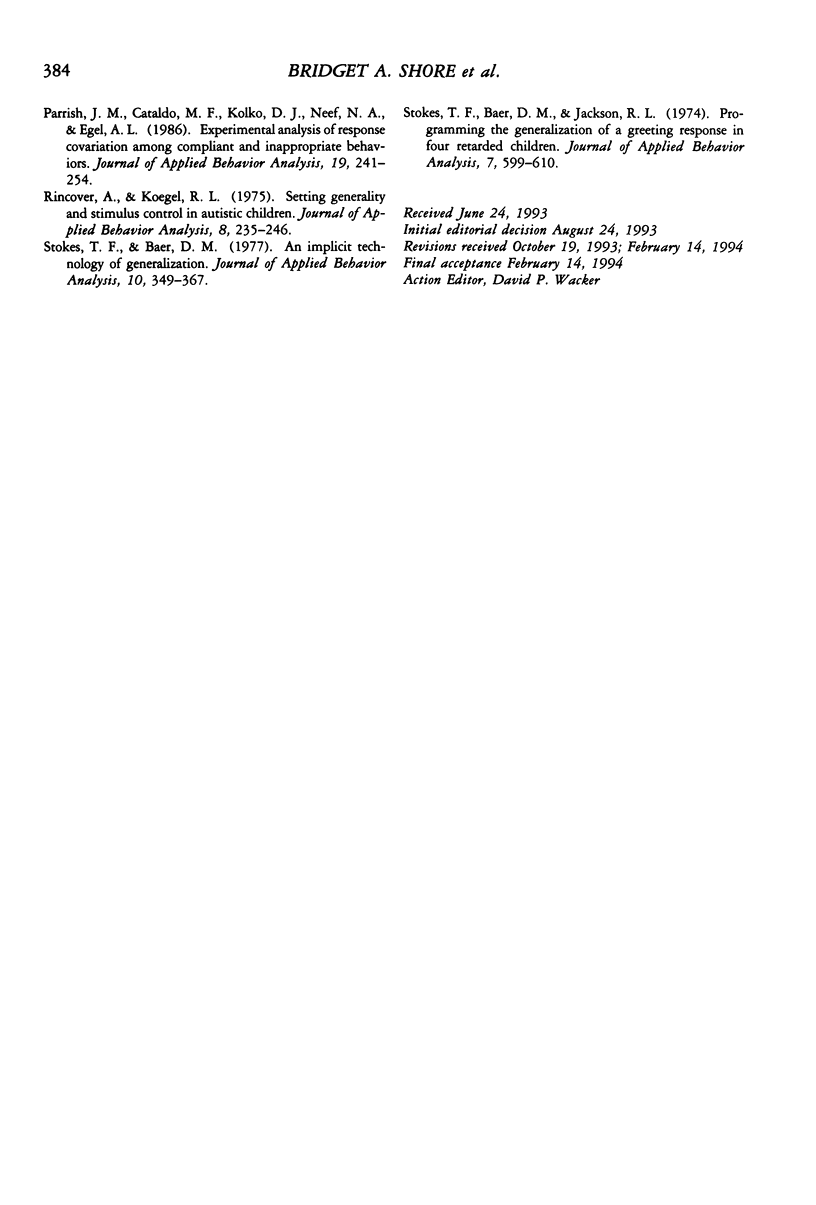
Selected References
These references are in PubMed. This may not be the complete list of references from this article.
- Baer D. M., Wolf M. M., Risley T. R. Some current dimensions of applied behavior analysis. J Appl Behav Anal. 1968 Spring;1(1):91–97. doi: 10.1901/jaba.1968.1-91. [DOI] [PMC free article] [PubMed] [Google Scholar]
- Baer D. M., Wolf M. M. Some still-current dimensions of applied behavior analysis. J Appl Behav Anal. 1987 Winter;20(4):313–327. doi: 10.1901/jaba.1987.20-313. [DOI] [PMC free article] [PubMed] [Google Scholar]
- Davis C. A., Brady M. P., Williams R. E., Hamilton R. Effects of high-probability requests on the acquisition and generalization of responses to requests in young children with behavior disorders. J Appl Behav Anal. 1992 Winter;25(4):905–916. doi: 10.1901/jaba.1992.25-905. [DOI] [PMC free article] [PubMed] [Google Scholar]
- Day H. M., Horner R. H. Building response classes: a comparison of two procedures for teaching generalized pouring to learners with severe disabilities. J Appl Behav Anal. 1989 Summer;22(2):223–229. doi: 10.1901/jaba.1989.22-223. [DOI] [PMC free article] [PubMed] [Google Scholar]
- Doyle P. J., Goldstein H., Bourgeois M. S., Nakles K. O. Facilitating generalized requesting behavior in Broca's aphasia: an experimental analysis of a generalization training procedure. J Appl Behav Anal. 1989 Summer;22(2):157–170. doi: 10.1901/jaba.1989.22-157. [DOI] [PMC free article] [PubMed] [Google Scholar]
- Garcia E., Baer D. M., Firestone I. The development of generalized imitation within topographically determined boundaries. J Appl Behav Anal. 1971 Summer;4(2):101–112. doi: 10.1901/jaba.1971.4-101. [DOI] [PMC free article] [PubMed] [Google Scholar]
- Halle J. W., Holt B. Assessing stimulus control in natural settings: an analysis of stimuli that acquire control during training. J Appl Behav Anal. 1991 Fall;24(3):579–589. doi: 10.1901/jaba.1991.24-579. [DOI] [PMC free article] [PubMed] [Google Scholar]
- Iwata B. A., Pace G. M., Kalsher M. J., Cowdery G. E., Cataldo M. F. Experimental analysis and extinction of self-injurious escape behavior. J Appl Behav Anal. 1990 Spring;23(1):11–27. doi: 10.1901/jaba.1990.23-11. [DOI] [PMC free article] [PubMed] [Google Scholar]
- Parrish J. M., Cataldo M. F., Kolko D. J., Neef N. A., Egel A. L. Experimental analysis of response covariation among compliant and inappropriate behaviors. J Appl Behav Anal. 1986 Fall;19(3):241–254. doi: 10.1901/jaba.1986.19-241. [DOI] [PMC free article] [PubMed] [Google Scholar]
- Rincover A., Koegel R. L. Setting generality and stimulus control in autistic children. J Appl Behav Anal. 1975 Fall;8(3):235–246. doi: 10.1901/jaba.1975.8-235. [DOI] [PMC free article] [PubMed] [Google Scholar]
- Stokes T. F., Baer D. M. An implicit technology of generalization. J Appl Behav Anal. 1977 Summer;10(2):349–367. doi: 10.1901/jaba.1977.10-349. [DOI] [PMC free article] [PubMed] [Google Scholar]
- Stokes T. F., Baer D. M., Jackson R. L. Programming the generalization of a greeting response in four retarded children. J Appl Behav Anal. 1974 Winter;7(4):599–610. doi: 10.1901/jaba.1974.7-599. [DOI] [PMC free article] [PubMed] [Google Scholar]


